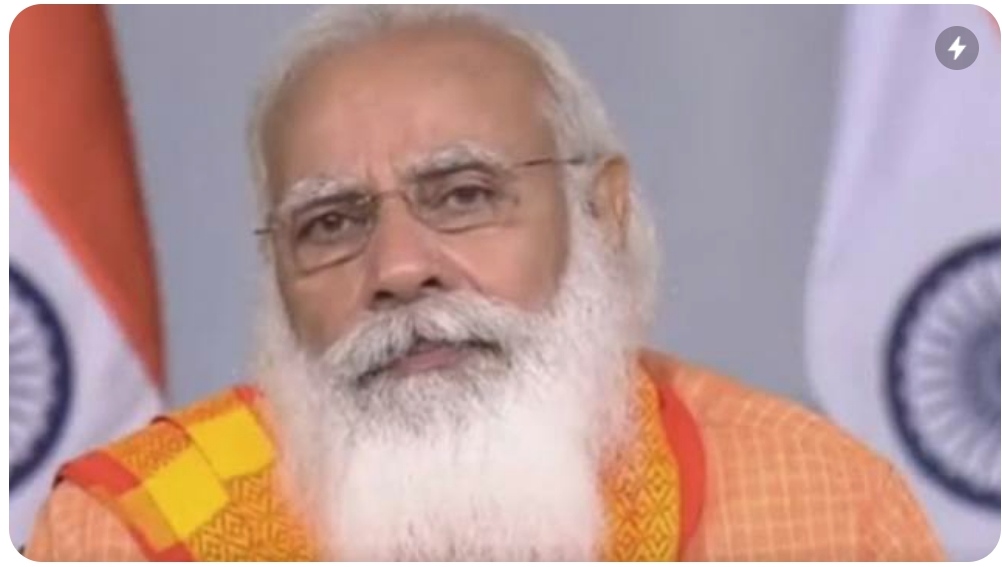Why Modi’s Tears Scare The Opposition?

When a crocodile eats its prey, it actually sheds tears. Not that it feels bad for its kill. It is simply that when it chomps on its food, it hisses a lot. That pushes warm air through its sinuses, triggering the tear-glands into action. Although the science behind it was worked out only recently, crocodile tears have been observed for centuries. And they have entered our lexicon to mean insincere, fake tears.
So, when PM Modi shed a few drops for India’s frontline health workers, the internet exploded with “crocodile tears” memes, jokes, quips and hashtags. It was almost as if the opposition’s cyber-warriors were ready for it. In fact, even before the event, some anti-Modi handles on social media had been asking whether India will “forgive” the PM if he came and wept on camera.
The question is why does the opposition fear Modi’s tears? The most important reason is that the BJP is dominant in the domain of public discourse. Words, actions, events, acquire significance only within a field of other connected meanings. The same thunderbolt can be seen as an act-of-god or a natural phenomenon, depending on the field of signs and meanings that an observer occupies. The PM’s tears will also be understood and internalized by voters, based on the way in which that specific action is communicated to them.
It is no secret that a large and influential section of India’s mainstream media bats for the Modi government. Even those who don’t are ruled by the decorum of journalism, which requires them to report the PM’s tears as unembellished facts. So, some report it as a ‘tearful tribute’, other say ‘the PM fights back tears’. News media’s reach is crucial for the BJP to present the PM as an empathetic being who is moved to tears by the sufferings of the people he serves.
This is what scares the opposition. Narendra Modi continues to be the tallest political figure in India. There is no doubt that the government’s bewildered incompetence has affected the PM’s popularity; opinion polls suggest that his approval ratings are at the lowest in seven years. Yet, the opposition has learnt the hard way that Modi is brilliant at winning back people’s trust very quickly.
Modi’s silence throughout much of the killer second-wave had opened up a door for the opposition to portray Modi as a heartless Nero. The PM’s image-managers responded by trying to build a narrative of ‘positivity’. This was an unfortunate choice, since it could easily be countered with puns about being COVID-‘positive’. In fact, the BJP’s sermons about looking for happiness and light in the middle of mass misery made the PM look even more uncaring. For the first time since 2014, the fight over political messaging was being lost by the ruling party.
The opposition knew that Modi crying on camera could turn the initiative back in the BJP’s favour. That is why it was prepared to deal with it. “Crocodile tears” was the first weapon. It has now moved to memes contrasting “PM Cares” and “PM Cries”. In some ways, it mirrors the BJP and Sangh-ecosystem’s consistent stigmatization of Rahul Gandhi as “Pappu”. They too know that Rahul is the only pan-Indian challenger to Modi’s throne. So, it is absolutely essential to constantly hammer into the voter’s mind that Rahul is a bumbling, immature imbecile. The Congress is responding now by presenting Modi as a heartless, uncaring, vote-hungry tyrant.
The opposition is currently ruling the social media narrative. But it also knows that public mind is most deeply influenced by mainstream media. A tweet with very heavy engagement might reach a couple of million people, whereas a normal Hindi news bulletin at 9 PM routinely reaches five times that many viewers. How newsrooms curate and package events determine what most voters will think. Even when voters react negatively to the way TV debates approach a political subject, the agenda has already been set for them, by the binaries presented by the two sides of the debate.
I have argued in the past that Rahul Gandhi and the Congress need to open doors towards India Inc to indirectly re-establish themselves within mainstream media. Many large networks are corporate-owned today, and others are heavily dependent on big ticket advertisers to survive. If advertisers, sponsors and owners are inimical to Rahul’s politics, then it will be very difficult for the national opposition to find its voice heard in the TV studios or headlined on front-pages.
The imponderable here is public mood. The Anna Hazare movement that destabilised the UPA government did not get much initial coverage from mainstream media. It was only when interviews with Anna Hazare and Arvind Kejriwal and occasional stories on the agitation began to get high ratings that news channels shifted en masse and made it their prime focus. Right now, the suspension of TV ratings for news channels has come as a possible boon to the Modi government. In the absence of weekly viewership feedback, news channels are continuing to maintain their pre-second wave tilt.
But there is another feedback loop that news organisations listen to. And that is of small sponsors, who account for a significant proportion of the revenues of non-English news channels. These are smaller brands which have an ear to their trading channels. The feedback they get from dealers and retailers gives them an insight into changes in viewership patterns that escape the more impersonal large corporates. If the ground shifts, ‘trade’ moneys will begin to flow to that part of the media which questions government policies.
That will be the beginning of the shift that no amount of tears can stop.



